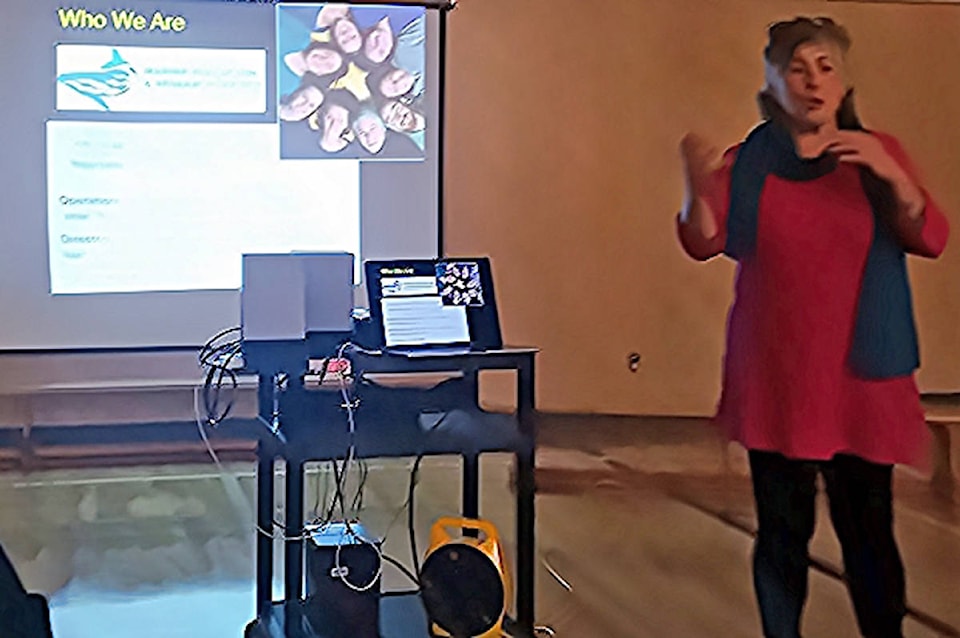Humpback whales are back! They have been swimming around Neurotsos Inlet this past summer and fall, spouting and moving around sometimes at high speeds. Often visible from Port Alice townsite, they sparked the curiosity of onlookers who would like to know more about these amazing marine giants.
On Oct. 16, Jackie Hildering, Education and Communications Director for the Marine Education and Research Society, made a presentation at the Sea View school. Hildering, whose past credits include work with Animal Planet, BBC productions and PBS, brings to her presentations an infectious enthusiasm for her work. Her talk was informative and entertaining.
Sightings of humpback whales appears to be increasing in BC, but it may only appear to be so because many individual whales are sighted several times. For this reason, it is important to identify and name the whales. There have been 88 reported sightings so far in 2019, leading to their status being downlisted from ‘threatened’ to ‘of special concern’, which may not be accurate. Since the banning of whaling in 1967, the main threats to the whales are now are entanglement in fishing gear and vessel strikes.
Each whale sighted has a nickname and a catalog name. The whales sighted in Neroutsos Inlet include: Whiskers, her calf Poseidon, Terry, Hammerhead, and Spongebob. Whales are given nicknames that refer to unique anatomical features to aid in recognition. Terry, Whiskers, and Poseidon were named by Sea View school students, who would often watch the whales from the swing sets in the schoolyard. Terry was named after Terry Fox, for an injury to its right tail fluke. Poseidon was named for a mark on its tail resembling a trident.
In 2018, the Fisheries Act was amended to require operators of vessels and fishing gear to report accidental contact with marine mammals. Regulations prohibit disturbance or approach within 100 meters of whales and dolphins, or within 200 meters of orcas. Much of Hilderings talk was about what to do and what not to do when observing whales. The rule is: SEE A BLOW GO SLOW. The number to call in case of entanglement, injury or disturbance of a marine mammal is: 1 800 465 4336.
Humpbacks are sighted every month of the year in BC, but they are not the same ones. It is not known if there are resident humpbacks who remain in our waters year round. Most migrate to warmer waters in Hawaii or Mexico to calve. They probably do this to avoid predation of calves by mammal eating orcas, but southern waters are not as food rich as they are here. Female whales returning to BC waters after calving often lose up to 50 per cent of their body mass by the time they return. It is not known where the whales go when they leave Neroutsos Inlet, but there is a very good chance they will return because migration and feeding behavior is passed on to juvenile whales, and humpbacks exhibit high site fidelity. Humpback calves only spend one year with their mothers. They do not form close family groups as orcas do.
Hildering spoke about the lack of scientific data about whales. Much is still unknown about them as they are difficult to track and observe. The Marine Education & Research Society welcomes reporting of whale sightings and photos by the public, their website is at: https://mersociety.org/
- Robert Leaske article
